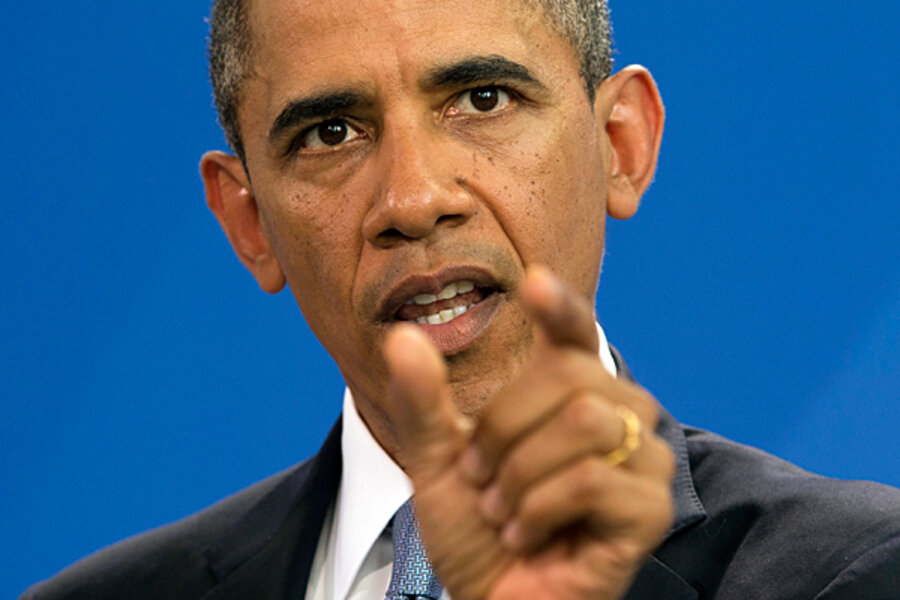Obama nuke proposals: Status quo, or too risky?
Loading...
| Washington
In his big Berlin speech on Wednesday President Obama proposed cutting US deployed strategic nuclear weapons by one-third if Russia agrees to similar reductions. The move met with approval from many arms control experts, who feel the world would be a bit safer if the two nations’ nuclear arsenals get smaller.
But Mr. Obama’s offer was only part of the US nuclear news of the day. The proposed cuts were part of new nuclear weapons "employment strategy" also announced by the White House Wednesday. In some ways that guidance may represent a more cautious, conservative approach to US policy than Obama’s bid for reductions would indicate.
“From a nuclear arms control perspective, the new guidance is a mixed bag,” writes Federation of American Scientists nuclear expert Hans M. Kristensen.
The White House says the new policies are meant to align US nuclear activities with the 21st century security environment.
“This is the latest in a series of concrete steps the President has made to advance his … agenda and the long-term goal of achieving the peace and security of a world without nuclear weapons,” said the White House in a fact sheet outlining the moves.
Among its highlights, the new nuclear employment strategy calls on the Pentagon to study ways of using non-nuclear strikes to accomplish some security missions now assigned to the nuclear arsenal.
“Although they are not a substitute for nuclear weapons, planning for non-nuclear strike options is a central part of reducing the role of nuclear weapons,” says a Department of Defense report on the new nuclear employment strategy.
The report also calls on the Pentagon to study ways of lowering current nuclear alert levels. Given that the current world geopolitical environment makes a surprise first strike on US nuclear forces much less likely, perhaps fewer of those forces need to be on a hair-trigger, ready to launch within minutes of an attack appears on the way.
“The guidance directs DoD to examine further options to reduce the role Launch Under Attack plays in US planning, while retaining the ability to Launch Under Attack if directed,” says the Pentagon report.
But the new guidance also makes clear that the US will continue to keep the size of Russia’s arsenal in mind when planning its own nuclear forces. It says “large disparities” between the two country’s nukes could cause an unstable security environment.
That means the Obama administration is not about to cut US nuclear forces down in a “minimum deterrence strategy.”
“The new guidance requires the United States to maintain significant counterforce capabilities against potential adversaries,” says the DoD report.
Nor does the guidance point the way toward the end of the US nuclear triad of nuclear delivery methods: bombers, submarines, and inter-continental ballistic missiles. It includes an explicit pledge to continue to fund such systems. It also calls for the US to maintain a stockpile of tactical nuclear weapons, and a stockpile of non-deployed strategic weapons in case flaws are found in any current system, or the world situation changes drastically and the US needs to “upload additional weapons,” in the report’s words.
In the wake of the president’s Berlin speech, some conservatives have denounced his proposal to cut deployed strategic weapons to around 1,000. Sen. Jon Kyl (R) of Arizona criticized it Thursday as “unilateral” and “risky” in a Time Magazine opinion piece.
Arms control advocates, for their part, have been generally supportive of Obama’s nuclear policy rethink, but say he should be more unilateral.
“We possess far more warheads than are necessary for deterrence and a secure second-strike capability,” write Lawrence Korb and Alex Rothman, policy analysts at the left-leaning Center for American Progress.








